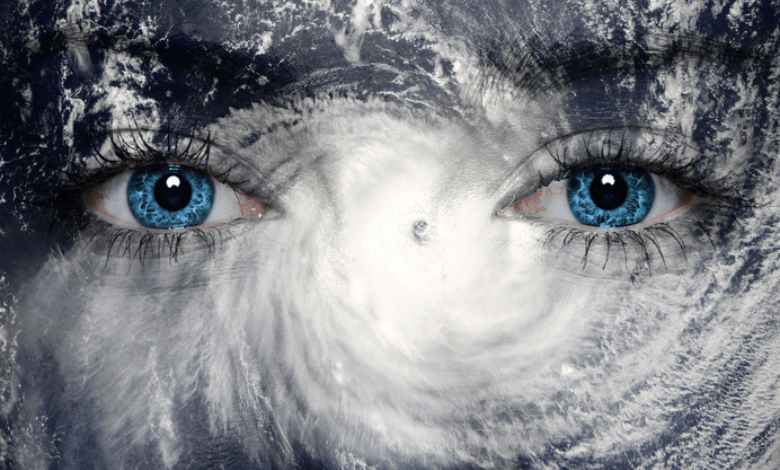Get Checked: Climate Change is Affecting Your Mental Health

Once upon a time, in the not-so-distant past, Andrew Bryant thought of climate change as a challenge set in the distant future, neatly tucked away in the year 2080, a century after his own arrival into the world.
The Pacific Northwest, where he practiced as a clinical social worker and psychotherapist in Seattle, was regarded as an enclave shielded from the tumultuous disruptions of climate change. Climate concerns were rare in therapy sessions, discussed in the abstract, removed from immediate reality. The wealth and geographical fortune of the region allowed its inhabitants the luxury of turning a blind eye to the looming climate crisis.
This atmospheric metamorphosis triggered a wave of climate discussions in Bryant’s therapy sessions. Clients no longer wanted to keep their climate anxieties at bay. They sought to explore the bewildering and alarming implications of climate change. Helplessness, anger, depression, and guilt became their constant companions.
Yet, therapists like Bryant found themselves navigating uncharted waters. Their training had not prepared them to address these emerging climate-related anxieties. The clash between mental health and climate change was a perplexing riddle that left them searching for answers.
Climate Crisis is Affecting Mental Health
This quest for knowledge led Bryant to embark on an extraordinary journey. He united with fellow therapists to establish associations for climate-conscious therapists and ventured into the uncharted realm of climate psychology. The scattered research at the intersection of climate change and psychology, concealed in various fields and journals, prompted him to create the Climate & Mind website. This digital sanctuary was designed to serve as a haven for therapists seeking resources and knowledge in this novel terrain.
The emergence of climate therapy uncovered a remarkable trend. People from around the world who sought therapy for climate-related concerns often found themselves disillusioned. Instead of validation, they were met with skepticism. Their mental health was questioned rather than the legitimacy of their climate-related fears.
These individuals also sought referrals to climate-focused therapists in their respective regions, whether it was Houston, Canada, Taiwan, or any other corner of the world. With a heavy heart, Bryant repeatedly had to convey that such a field of therapy was yet to be fully realized.
As 2021 arrived, a shocking heat wave swept through the Pacific Northwest, melting infrastructure, claiming hundreds of lives, and scorching millions of evergreen trees—the symbolic lushness of the region. Bryant’s practice transformed to accommodate this new reality of climate psychology. His clients no longer touched on climate change incidentally; instead, many were activists, scientists, or individuals who specifically sought out Bryant because of their climate-related concerns.
The Climate Psychology Alliance North America, for example, maintained a list of over 100 psychotherapists across the country who were considered “climate-aware.”
Read More: Report: Alarming Summer Trend Engulfs 98% of the Global Population
The transition into climate therapy was undoubtedly challenging. While some aspects of climate fears seamlessly integrated into therapy sessions, complex questions emerged. The traditional focus in therapy, described as “fixing the individual,” became too simplistic when faced with climate change—a problem that spanned species-wide and emphasized the profound interconnectedness of individuals within intricate systems, whether atmospheric, biospheric, or economic.
What are the detrimental effects?
In a foundational paper published in 2011, Susan Clayton and Thomas J. Doherty predicted that climate change would have substantial negative effects on mental health. They outlined three broad types of potential impacts: the acute trauma experienced during climate disasters, the corrosive fear of a deteriorating future, and the psychosocial decay that could erode the fabric of communities dealing with disruptive changes. They argued that climate change was as much a psychological and social phenomenon as it was a matter of biodiversity and geophysics.
These predictions have since materialized. Studies have reported spikes in post-traumatic stress disorder (PTSD) rates following climate disasters, and in 2017, the American Psychological Association officially defined “ecoanxiety” as a “chronic fear of environmental doom.” Climate-induced migration is on the rise, as is xenophobia and community mistrust. According to a 2022 survey conducted by Yale and George Mason University, a majority of Americans reported spending time worrying about climate change. Many said these worries had led to symptoms of depression or anxiety, with more than a quarter actively avoiding thinking about it.
Barbara Easterlin, a clinical psychologist, remembers a time when environmental psychology focused on the therapeutic benefits of connecting with nature. It barely acknowledged that the collapse of nature or our role in causing it could also have detrimental psychological effects.
Today, Easterlin is dedicated to crafting training programs in climate therapy for the Climate Psychology Alliance North America and beyond. Yet, she acknowledges that the field is still in its infancy, devoid of evidence-tested treatments or standardized practices. Therapists often find themselves navigating uncharted waters.
Within this evolving landscape, therapists are confronted with a unique challenge. The breakdown of traditional boundaries that discourage therapists from revealing their own issues or experiences in the therapy room is hard to ignore. Climate therapy blurs the lines further, as therapists and patients grapple with the same existential fears. While some therapists worry about eroding these boundaries, others embrace this shift. As one family therapist wrote in a CPA-NA newsletter, “There is no place on the planet that won’t eventually be impacted, where the client and therapist won’t be in it together.” For many therapists, vulnerability and self-disclosure become essential components of their practice.
In this field, which has historically emphasized strict boundaries, climate therapy poses a unique challenge. The erosion of boundaries becomes inevitable when the problems at hand affect therapists and clients alike. While some therapists are concerned about navigating this shift, others see it as an opportunity. “There is no place on the planet that won’t eventually be impacted, where client and therapist won’t be in it together,” notes a family therapist. Many therapists acknowledge that sharing their own emotional responses can foster a deeper connection with their clients.
In one of the Zoom gatherings, Annie Dwyer, still in training as a counselor, explored the idea of applying traditional trauma treatments to ongoing environmental losses. Conventional therapy often aims to help individuals move away from the past’s danger and towards the safety of the present. However, in the face of a relentless threat and perpetual grief, this formula no longer applies. The climate crisis offers no closure or resolution within our lifetimes. Dwyer poses the profound question: “How do you think about resilience apart from resolution?”
This vibrant exchange reflects the evolving nature of climate therapy. It extends beyond the therapy room into the realm of community gatherings. For Bryant, the work outside the therapy room is the most exciting. In group settings, people can openly share their emotions and confront the future collectively. It becomes evident that they are not alone in their struggles.
The conversation transcends the individual, embracing collective experiences and ideas. There is no isolated space to be mended alone; there is only a shared and broken world, and a united community determined to cherish it.
As this unique and human journey of climate therapy unfolds, therapists are left pondering the fundamental purpose of therapy itself. For many therapists, the role isn’t to “fix” an individual’s problems or address pathology. Instead, it’s about empowering patients to explore their most challenging emotions, confront painful feelings, and build the resilience to face an uncertain future.
Therapists find that many of the methods in their traditional toolkit are still applicable in climate psychology. Anxiety, hopelessness, and anger are familiar territories, each with a wealth of well-studied treatments. Yet, climate change introduces individual nuances—hypervigilant doom-scrolling, for instance, if patients struggle with control, or plunging into despondency for those prone to depression.
Moreover, patients carry their unique baggage into the therapy room. Couples may quarrel about the ethics of bringing children into a world threatened by environmental catastrophe. Patients from privileged backgrounds might resist this idea, while those from communities accustomed to surviving traumas are more open to the discussion. The collapse of a way of life is not a new experience for them, yet they persist in the face of challenges.
Bryant, for one, believes that the most exciting work happens outside the therapy room. In gatherings where people openly discuss their feelings and the future they confront, therapists like Weston find the inspiration to reconfigure their practice to focus on this daunting challenge. Weston acknowledges that therapists find themselves walking on new ground, but it’s a path worth exploring.
The power of community, shared experiences, and mutual support becomes apparent. It’s in these settings that people feel embraced rather than isolated, and the conversation naturally shifts from the individual to collective experiences and ideas. In this evolving landscape of climate therapy, there is no isolated space waiting to be mended alone; there is only a shared and broken world, and a united community determined to cherish it.



